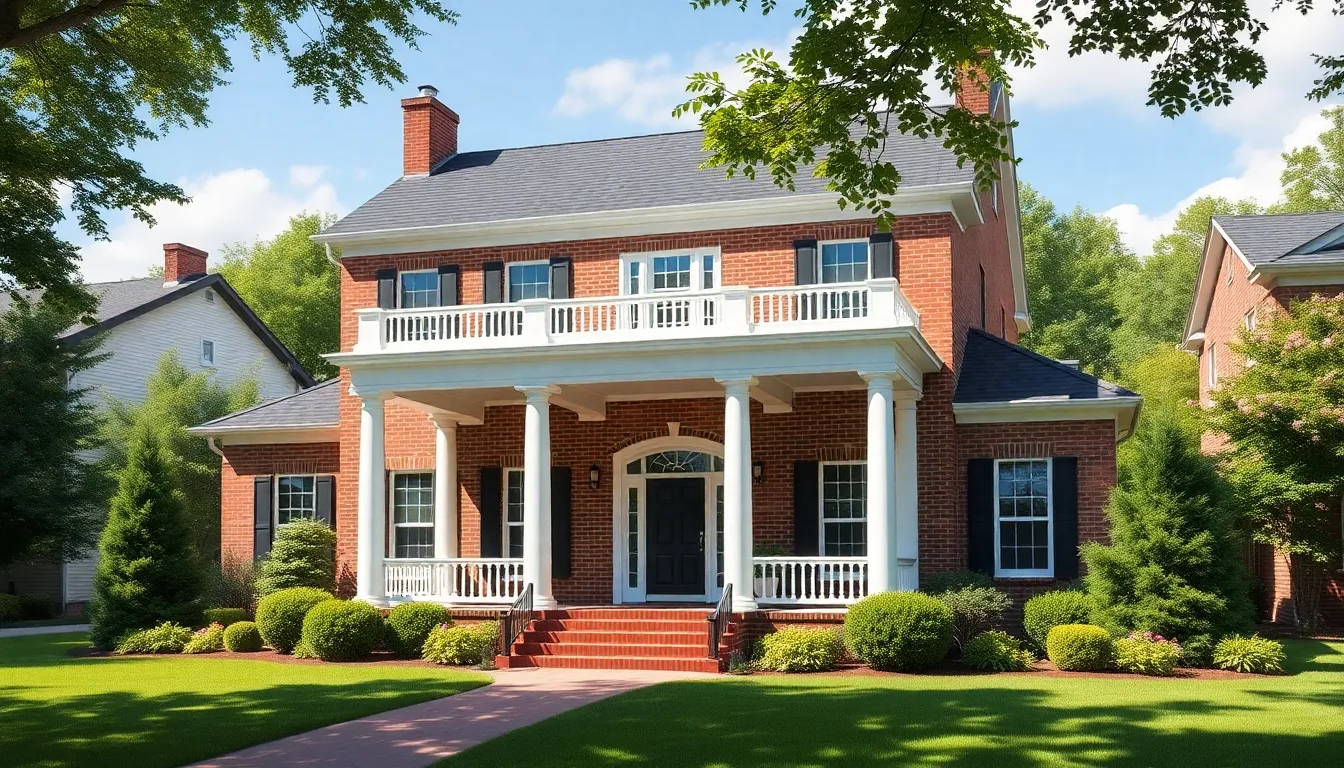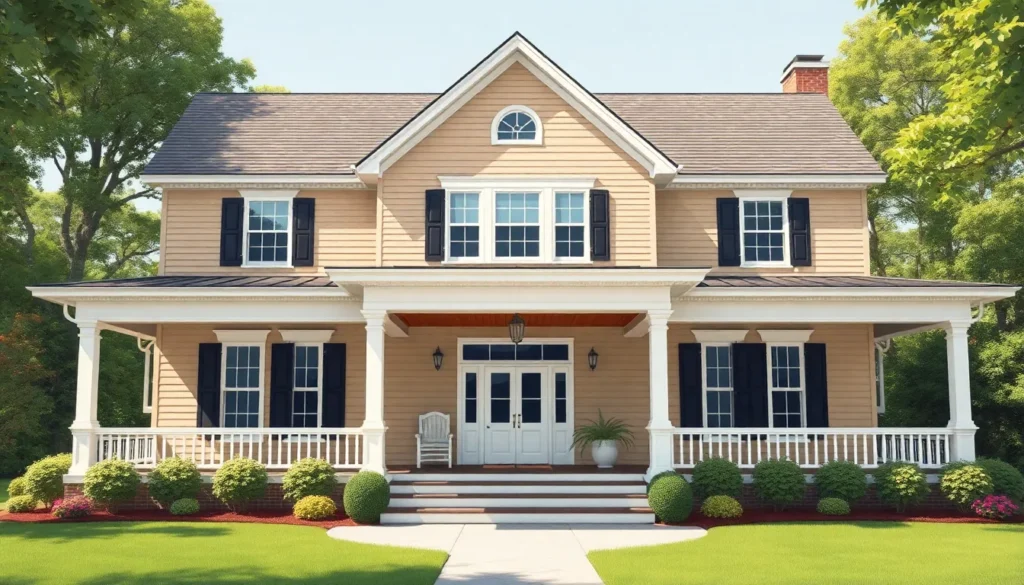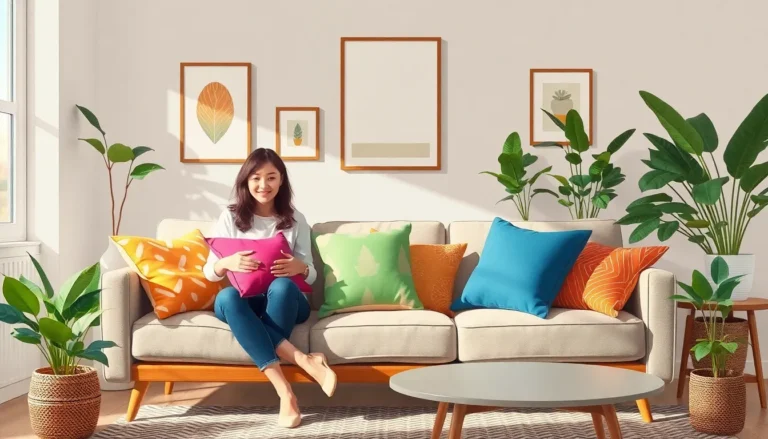Table of Contents
ToggleColonial home design isn’t just a style; it’s a journey back in time, where charm meets history in the most delightful way. Picture wide porches that beckon friends for sweet tea and cozy living rooms that make you feel like you’ve stepped into a Jane Austen novel. These homes are like that favorite sweater—comfortable, familiar, and always in vogue.
With their symmetrical facades and classic detailing, colonial homes capture the essence of tradition while offering modern comforts. Whether it’s the elegant crown molding or the inviting fireplaces, each element tells a story worth sharing. So, if you’re ready to trade in your cookie-cutter abode for a slice of history, buckle up. Colonial home design is about to sweep you off your feet and into a world where every corner has a tale to tell.
Overview of Colonial Home Design
Colonial home design showcases historical elegance and practical living. Its distinctive elements echo a rich cultural heritage.
Key Characteristics
Symmetrical facades define colonial homes. They often feature gabled roofs that enhance architectural appeal. Classic details include double-hung windows, which provide both beauty and functionality. Wide porches invite relaxation and social interaction. Interior spaces maintain a cozy atmosphere, showcasing wooden beams and fireplaces. These elements harmonize traditional aesthetics with modern comforts.
Historical Significance
Colonial homes originated during the 1600s, signifying European settlement in North America. They reflect the adaptation of various architectural styles, including Dutch, French, and Spanish influences. Homes illustrate the evolution of building techniques and materials over centuries. Colonial design also highlights social structures, serving as symbols of wealth and status. Such homes remain integral to understanding American history and architectural heritage.
Styles of Colonial Home Design

Various styles of colonial home design showcase unique architectural elements and historical influences. Each style contributes to the rich tapestry of American architectural history.
Georgian Style
Georgian style emerged in the early 18th century, exemplifying classic symmetry. Characterized by square or rectangular shapes, this style often features brick exteriors and stone accents. The emphasis on elegance is apparent in the utilization of columned porticos and pediments. Typically, windows are double-hung and arranged in a balanced manner. Interiors often boast high ceilings and elaborate moldings, creating a sense of grandeur. Georgian homes emphasize proportion, making them timeless architectural favorites.
Federal Style
Federal style gained popularity from the late 18th to the early 19th century, reflecting the neoclassical influences of the period. This style is noted for its refined detailing and an overall sense of harmony. Facades usually display decorative elements, such as fanlights and sidelights flanking the front door. Rooflines are often flat or slightly pitched, creating a streamlined appearance. Additionally, Federal homes prioritize verticality, incorporating elegant chimneys and narrow windows to enhance height. The interior layout often features open spaces and sophisticated finishes, further showcasing its charm.
Dutch Colonial Style
Dutch Colonial style reflects the influences of early Dutch settlers, prominent in the 17th century. This style features distinctive gambrel roofs that create a spacious upper level for living. Facades typically include brick or clapboard siding, contributing to their rustic appeal. Porches are common, enhancing the welcoming atmosphere of these homes. Often, Dutch Colonial homes have large, functional spaces, promoting comfortable family living. Interior elements such as exposed beams and cozy fireplaces strengthen the traditional feel of these residences.
Elements of Colonial Home Design
Colonial home design features distinct architectural and interior design aspects that reflect its historical roots and charm.
Architectural Features
Symmetrical facades define colonial homes, often complemented by evenly spaced windows and central doors. Gabled roofs add visual interest, while these roofs frequently feature dormers for additional light. Painted wood siding or brick exteriors add durability, showcasing craftsmanship. Front porches invite relaxation, reinforcing the importance of outdoor living. Double-hung windows promote ventilation and typically include wooden shutters for added character. These design elements combine to create a balanced, timeless aesthetic that characterizes colonial architecture.
Interior Design Aspects
Colonial interiors emphasize practicality and warmth, typically showcasing natural materials. Wooden beams often grace ceilings, highlighting the craftsmanship of the time. Fireplaces serve as focal points in living spaces, providing both comfort and aesthetics. Hardwood floors create a classic look, while rich textures and patterned fabrics add depth. Traditional furnishings, such as sturdy tables and upholstered chairs, enhance the cozy atmosphere. Crown moldings and wainscoting, common features, showcase attention to detail, offering a nod to the elegance of the era. Each interior element reinforces the inviting nature of colonial homes.
Modern Adaptations of Colonial Home Design
Modern adaptations of colonial home design blend traditional aesthetics with contemporary comforts. Homeowners often integrate contemporary elements to enhance functionality while preserving classic beauty.
Integrating Contemporary Elements
Incorporating modern materials simplifies maintenance and boosts energy efficiency. Open floor plans gain popularity, creating spacious and versatile living areas. Large windows maximize natural light, enhancing interior warmth. Designers also infuse contemporary color palettes, offering fresh interpretations of colonial elegance. Smart home technology becomes standard, providing convenience and security without sacrificing style.
Sustainability in Colonial Designs
Sustainable practices emerge as essential in colonial home adaptations. Eco-friendly building materials reduce environmental impacts while maintaining architectural integrity. Energy-efficient appliances and insulation contribute to reduced utility costs. Solar panels fit seamlessly on rooftops, offering renewable energy options. Homeowners often prioritize landscaping with native plants, promoting biodiversity and conservation efforts.
Colonial home design stands as a testament to America’s architectural heritage. Its blend of historical elegance and modern functionality continues to captivate homeowners. The unique characteristics of these homes tell stories of the past while accommodating contemporary lifestyles.
Embracing colonial design means appreciating the craftsmanship and tradition that shaped these structures. As they evolve with modern adaptations, colonial homes remain inviting spaces that foster comfort and warmth. Ultimately, they offer a timeless appeal that resonates with those seeking both style and substance in their living environments.







